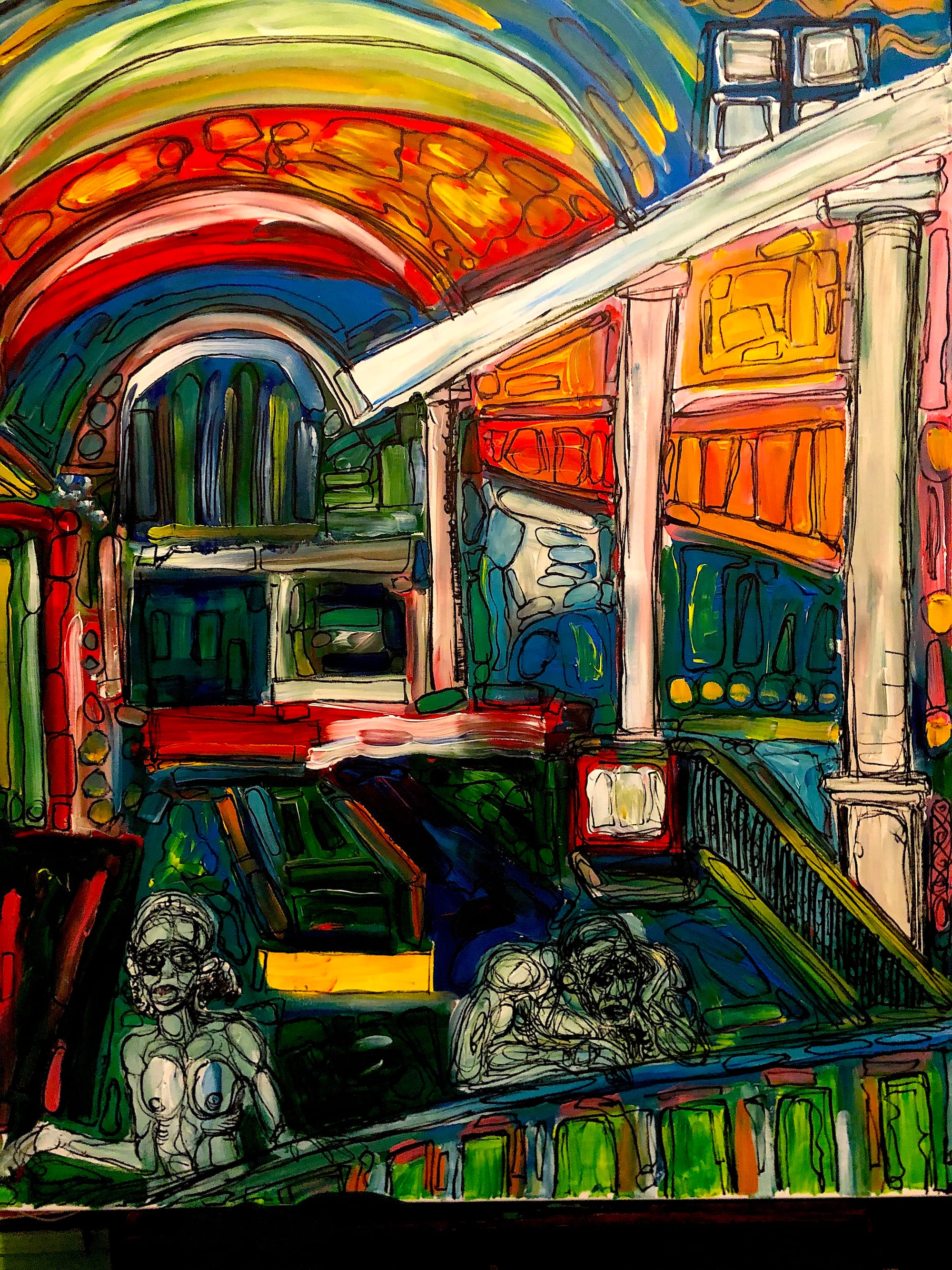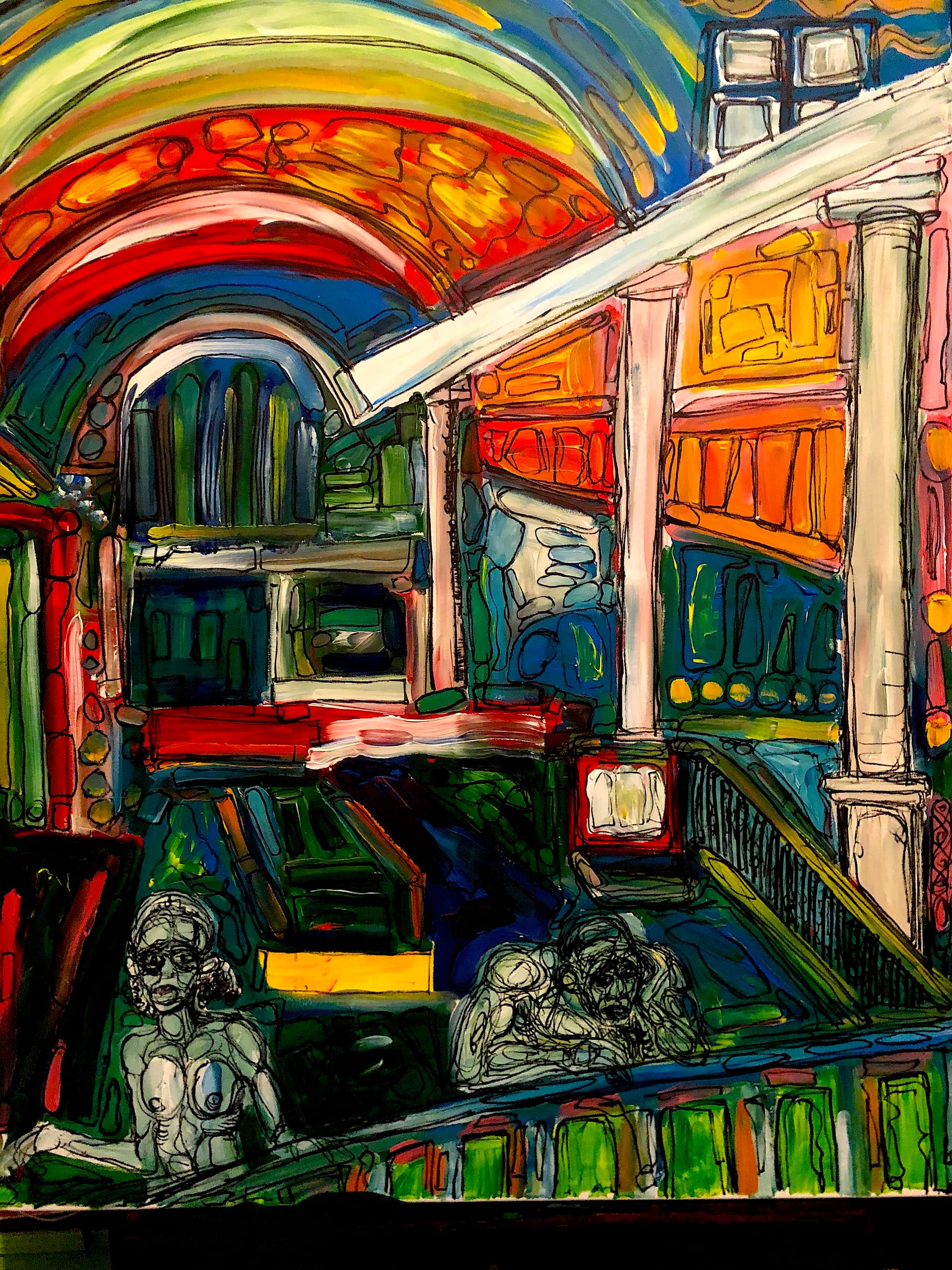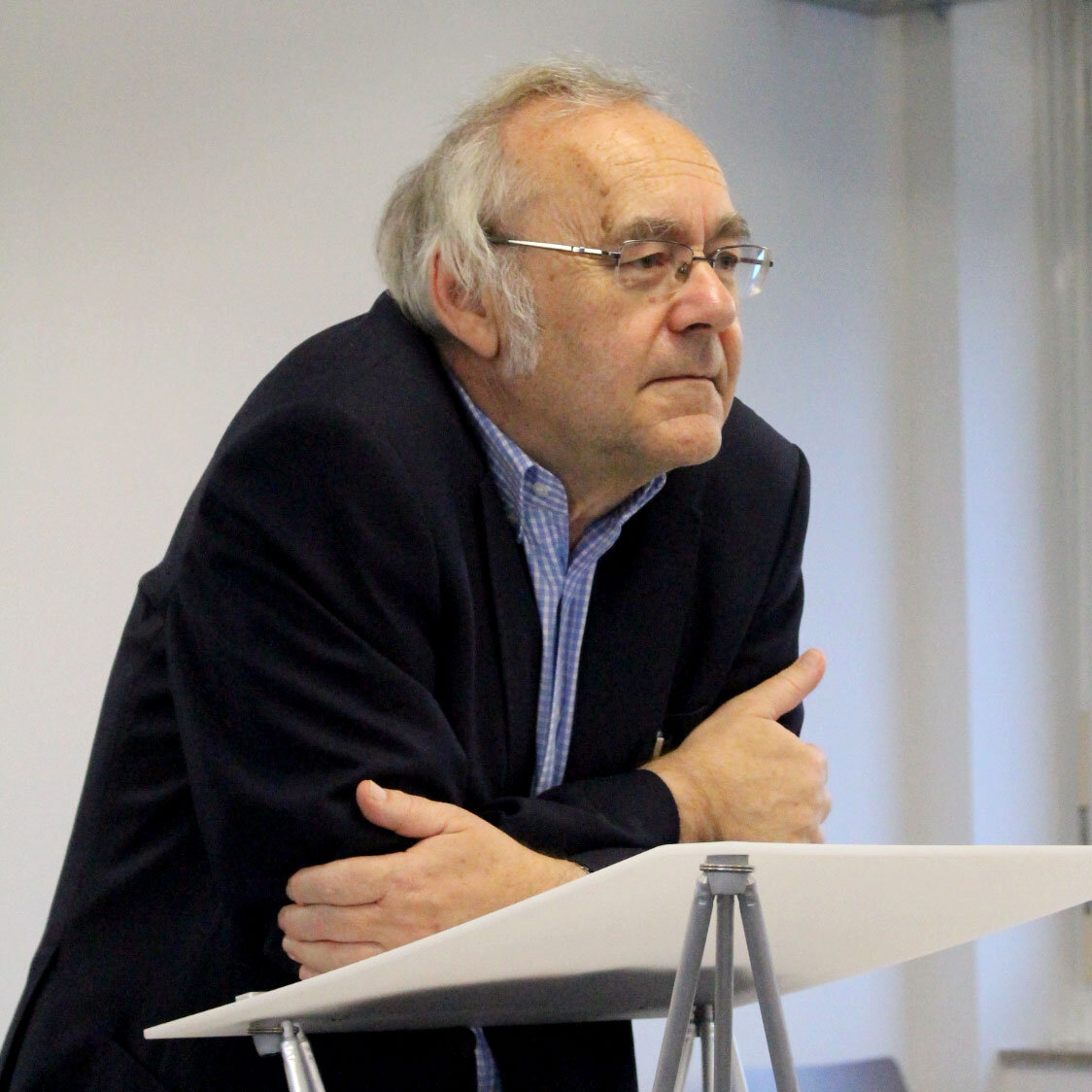The Beyond of Philosophy 5


14. To describe an(y) object is to continue the (insofar already performed) description /an(y) object/.*
To describe an apple is to continue the (already performed) description /an apple/.
Describing the table in the corner means continuing the description /the table in the corner/; starting from the already present description /the table in the corner/ and proceeding further. In order to be able to describe the table in the corner, the description /the table in the corner/ must already be present.When the teacher calls on the pupil to describe the picture hanging on the wall, then the object of the description to be performed is the picture hanging on the wall. The pupil now describes the picture hanging on the wall like that: “The picture hanging on the wall is a still life with flowers.” In this way, the teacher’s preceding description /the picture hanging on the wall/ is taken on and continued by the pupil. Of course, the pupil could also have continued the teacher’s preceding description by saying: “It is a still life with flowers.” or: “There are flowers in the picture.”
15. To talk about an object is to continue the talk /an object/, is to say something that exceeds the talk /an object/. To talk about Africa is to say more than just /Africa/, is to say something that exceeds the talk /Africa/.
When the teacher calls on the pupil to say something about Africa, then the object of what the pupil is supposed to say is Africa. The pupil takes on and continues the teacher’s preceding talk /Africa/ by saying something like: “Africa is one of the five continents.” The pupil performs the task assigned to him by saying something about Africa—that is, by saying something over and above the talk /Africa/ and not by merely saying: “Africa.”
16. Knowledge about the apple lying on the table is knowledge that exceeds the knowledge /The apple is lying on the table/. To know something about the apple lying on the table is to know more, is to know something else than simply that the apple is lying on the table.To know nothing about the apple lying on the table is to know only that the apple is lying on the table.
17. The description of the apple on the table is the continuation of the description /the apple on the table/ with the inclusion of the description /the apple on the table/. To describe the apple on the table means not to stop at the description /the apple on the table/.What is to be described, the object of the description, is also a description—namely, the description already made. In Dualizing Speech where descriptions are directed to the object, different descriptions of one and the same description would now become possible, whereby the description already there would acquire a so-called identity against the other descriptions. The result would be a differentiation into metadescription(s) or metalanguage(s) and object-description or object-language. In Non-dualizing Speech, by contrast, the description of a description is nothing more than the continuation of the first, prior description, and no division is made into metalanguage and object-language.
18. The object of a description is in each case the description already performed. This does not imply that, in Non-dualizing Speech, the object of the description is not an object but instead a description: which would amount to denying the distinction between description and object, whereas in the course of this study conditions and factors are to be presented that promote and/or enable this and other distinctions in their traditional form.
19. Knowledge is always knowledge of something, knowledge of the world, knowledge of reality.The knowledge /something/ precedes the knowledge of something. Knowledge of something is knowledge that exceeds the already achieved knowledge /something/. We do not strive for knowledge of the world, but we strive from the knowledge /the world/ onwards .The object of knowledge relates to the knowledge of the object as the (already) present knowledge to not (yet) present knowledge.
20. The presupposition of a successful quest for knowledge in Dualizing Speech is a (prior) world ‘distinct from language’, (prior) objects ‘distinct from language’, etc., to which properties are ascribed or attributed through language in the process of acquiring knowledge that the objects, the world, etc., already possessed in advance. The result of the cognitive process, therefore, is the specification-differentiation (or, depending on which variant of Dualizing Speech is practiced, also the definition, design, constitution or construction) of the supposed preconditions of this very process.The denotation [Angabe] of the ‘nonlinguistic’ / ‘language-distinct’ presuppositions for the acquisition of knowledge is only accomplished through the acquisition of knowledge.
21. Descriptions are always descriptions of something, of an object, an event, a state of affairs, etc. Every description of the object changes/alters the object of the description:The object of the description relates to the description of the object like the description so far to the description from now on , like the description that has already been performed to the description that has not (yet) been performed.The description of the object constitutes/forms together with the object it describes a “new” object of further description. Denoting the object of a description means denoting and prescribing a description so far that is supposed to be continued in a description from now on and to be changed into a new object for further description(s).
22. An example: The task is to describe the table standing in the corner. /The table standing in the corner/ is the pre-given description, the description so far , that is to be continued. This description so far is now continued in a description from now on such as: “The table standing in the corner has four legs.” After this continuation of the description so far /The table standing in the corner/ there is now a new object for a further description from now on, and hence a new description so far —namely, the description so far /The table that is standing in the corner and has four legs/. The initial description so far has been extended/changed through the continuation of the description from now on (and together with it) into a description so far (2). The description so far (2) can now be continued, for example in a description from now on (2) “The table that is standing in the corner and has four legs is brown.” This would amount to an extension of the description so far (2) into a description so far (3) /The table that is standing in the corner and has four legs is brown/, which can in turn be continued through a description from now on (3).
23. In Dualizing Speech, descriptions are directed to objects allegedly ‘distinct from language’. The distinction between objects ‘distinct from language’ and linguistic descriptions, between object-level and language-level, is understood as a necessary presupposition of rational discourse. The proposal here, by contrast, is to perform the description from the object as its starting point.Such a procedure is unusual and unpopular: Because it does not make the distinctions of Dualizing Speech, it is continually exposed to the charge that, by claiming to be taken seriously in philosophical discourse, it likewise makes and must make these distinctions at least in a disguised way, for otherwise it would become trapped in inextricable difficulties. Then, for example, we would no longer drive a car, but instead a description of a car; we could sit on the description “chair,” take a bite out of the description “apple,” buy the description “ice cream” and so forth.
Non-dualizing Speech is reproached with being trapped in a dilemma: Either it speaks of descriptions of objects where all reasonable people speak of objects, and nevertheless understands by descriptions of objects what is generally understood by this—in which case it makes the same presuppositions as Dualizing Speech, only with the confusing terminological difference that now two kinds of descriptions of objects must be distinguished: one kind that assumes the role of the object of the description, and another that plays the usual role of the description of the object. If Non-dualizing Speech asserts that the object of the description is nothing other than a linguistic description, and thereby reduces the language-world dichotomy to one of its two sides—namely, to language—then it must face up to the absurd consequences outlined above.In order to show that Non-dualizing Speech does not become trapped in this dilemma, some of the objections against the theses put forward up to now will be discussed in the following sections.
24. “It is asserted that the object of the description is nothing other than the description denoted. The object in an example is the apple on the table. A description of the apple on the table could now be ‘The apple on the table is green.’ However, then the apple on the table would be nothing other than ‘The apple on the table is green’—and this is certainly absurd.”
In response: The apple on the table is described by continuing the description performed thereby /the apple on the table/. This happens in the description “The apple on the table is green.” Thus the description already performed is not “The apple on the table is green” but /The apple on the table/. The description “The apple on the table is green” begins with the already performed description /the apple on the table/. The apple on the table can only be equated with “The apple on the table is green.” by failing to recognize that the denoted object of the description is the description already made before. The absurd implication that I am accused of rests on the supposition that I retain the distinction between ‘language-distinct’, ‘description-distinct’ object of the description, on the one hand, and linguistic description of the object, on the other, and thus place a not-(yet)-described object prior to the description of the object to which the linguistic description is supposed to refer and be directed. The assumption of an “undescribed” object of a description—here an undescribed apple on the table—rests on a contradiction, however, if by the non-described apple on the table something else is understood than that there is simply the description /the apple on the table/ and no further description.
An object is described when the insofar already given description /an object/ is continued further and when such a description is not simply “an object” or “an object is an object.”If the teacher says to the pupil “Tell me something about Rome” and the pupil says nothing more than “Rome”, then this description-answer is not sufficient. The pupil speaks about Rome only by exceeding the talk /Rome/ given in advance by the teacher, for instance by saying: “Rome is the capital of Italy.”
* When I explain the object of a description as an already performed description, I do not place the description already performed or executed in quotation marks (“…”) but instead in execution marks (/…/).The aim is to avoid confusion between the object of description—that is, the description performed—and the description of the object, thus the description to be performed.

Josef Mitterer is an Austrian philosopher.
Next: The Beyond of Philosophy 6
The Beyond of Philosophy 1 here
The Beyond of Philosophy 2 here
The Beyond of Philosophy 3 here
The Beyond of Philosophy 4 here